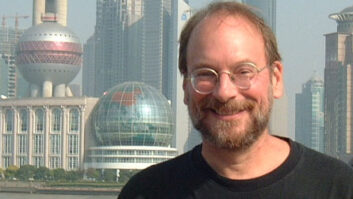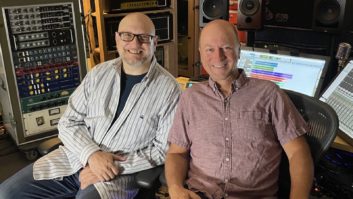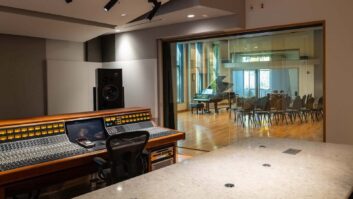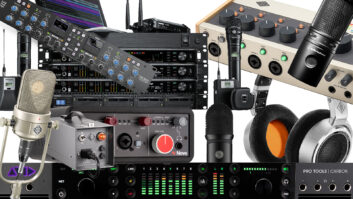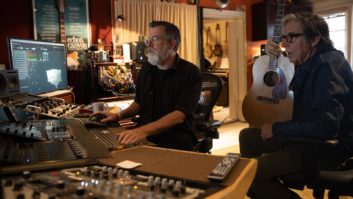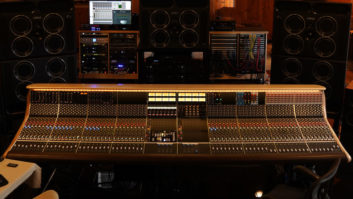
Greg Penny, the engineer in charge of Elton John’s archives and reissues, was an early adopter of immersive audio and has become one of its champions. Over time, he’s found that even skeptics are blown away by his Atmos remix of Sir Elton’s 1972 smash “Rocket Man.” Mix covered the original Gus Dudgeon production of “Rocket Man” in an interview with engineer Ken Scott in March 2010. Here, Penny shares details about the Atmos mix he did in 2017.
“‘Rocket Man’ has Elton on piano, Dee Murray on bass, Nigel Olsson on drums, and Davey Johnstone on that slide guitar that sounds like a rocket ship taking off,” Penny says. “We started the Atmos mix with 96k copies of the original multitrack, but I printed all the reverbs with the TC Electronic TC 6000 because I wasn’t sure at that time that Dolby could create what I wanted.

“Then I prepared it for Dolby with enough multichannel stems and reverbs to send out to all the speakers. This was done in Dolby’s Burbank studio, which had JBL speakers.
“I like to work from the vocals out, so my first consideration was to have his voice build from the front of the room, where he would be if he were in the room playing it for you. The track is constructed in a way that unfolds like a flower to the chorus, so it made sense to place the instruments first in the center and expand the audio field out as they enter the mix.
“So the track starts sort of small and builds to the chorus, which opens up the whole range of speakers, horizontally and vertically. Then the track goes back to that small intimate sound, and it builds again after the second verse with David Hentschel’s beautiful ARP synth part.
“There are also two acoustic guitars on that track, and I panned those out from the center to the side; they seem to lift you up and keep you rhythmically sustained through the whole track as it ebbs and flows. It became the perfect track to use as a demonstration [of the format], because of the way it is revealed to the listener.”
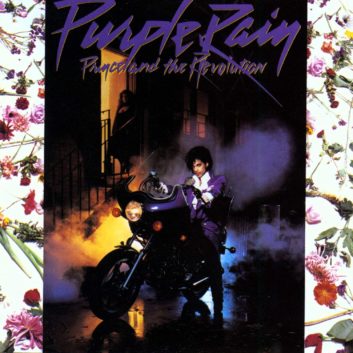
Engineer David Leonard has focused a lot on Atmos mixing lately, amassing credits on artists ranging from Glen Campbell to Billie Eilish. Mix talked to Leonard for a “Classic Tracks” article in January 2009 about the making of Prince’s song “Purple Rain,” and recently Leonard had the opportunity to revisit another track that he worked on for the Purple Rain album 26 years ago: “When Doves Cry.”
Leonard creates Atmos mixes in a couple of different Nashville-area studios for a variety of clients. He often works in the PMC-outfitted East Iris in Berry Hill when he’s mixing Universal artists. However, this Prince classic from Purple Rain was remixed in Blackbird Studios in an Atmos room outfitted with ATC speakers. as well as Pro Tools and the Dolby Atmos Renderer.
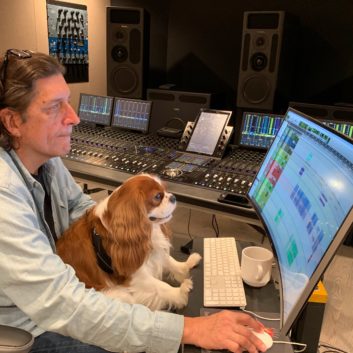
“All of the rooms I work in sound spectacular,” Leonard says. “East Iris is a little on the smaller side, and the Blackbird room is much larger and more theatrical. For this song, I worked from 96k copies of the original 24-track masters. ‘When Doves Cry’ is actually a pretty stripped-down track: There’s a drum loop, keyboards, some guitar solos, vocals, and that’s it.
“When I work in Atmos, I like to keep the voice front and center. I’ve heard Atmos mixes I like where the vocal is behind you, but I keep the vocal up front. The drums can spread around; you can move elements of the kit behind you, cymbals can move above-behind you, and then the guitar riffs can go beside you or above-behind you, and then you can put delayed elements of the original sources above or back behind you, so everything is more spatial in room.
“On ‘When Doves Cry,’ Prince’s vocal is in front and there’s reverb on it that moves in stereo from the front to the rear of the room. A lot of the harmonies can move to the left and right of your head, and above, so the main vocals are always in front of you but the harmony is above you in the ceiling area. It’s a very creative process with lots of real estate to fill up. The overhead speakers open up another dimension that puts you inside a balloon of audio.”
